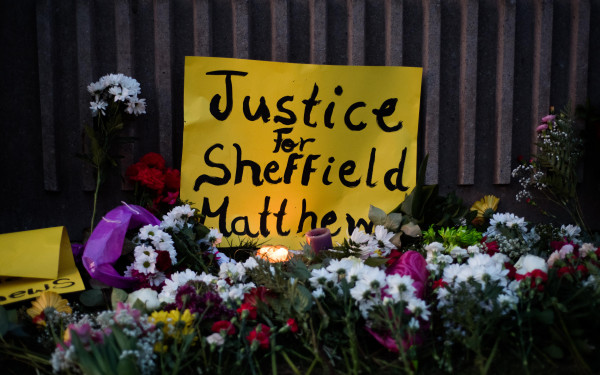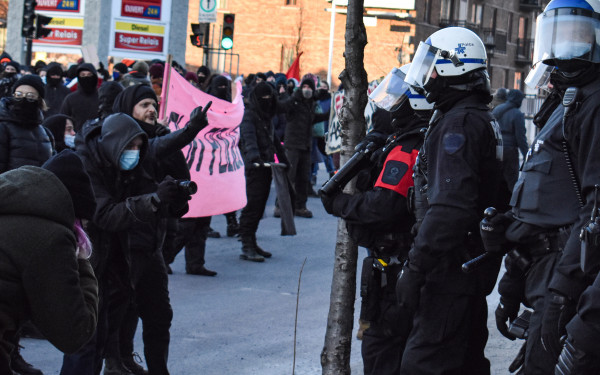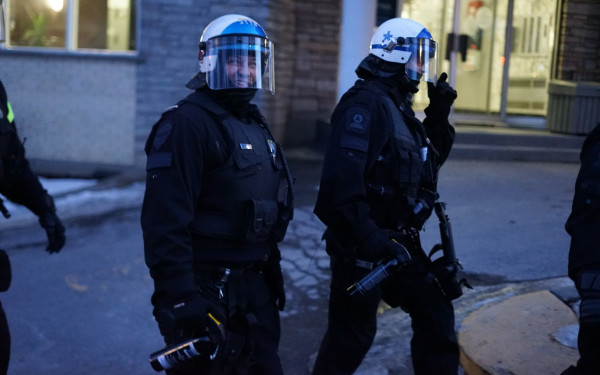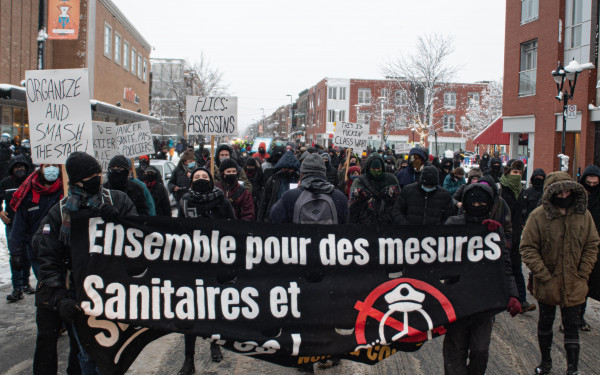Over-policed and underserved
The stark contrast in police activity in Montreal’s different neighbourhoods
The identity of Jade was concealed for their safety.
Jade was 15 when they first witnessed police violence.
In the summer of 2016, they and their two friends were walking around the Côte-des-Neiges neighbourhood, near Martin-Luther-King Park. They all had been drinking and were under the influence.
“Kids sometimes get into their parents’ alcohol and take it,” they recalled. “We were being loud and having fun.”
“I think someone called the police on us because of that,” Jade added.
One of Jade’s friends was a taller Black girl of the same age. They believe the officers didn’t think she was a minor because of her height.
Upon arrival, the officers seized the girl and slammed her on the ground.
“I remember looking over at my friend and feeling so helpless,” Jade said. “They didn’t bother coming to us and asking us who we were.”
The police officers continued pushing her face on the ground, while asking her about the white friends she was with. According to Jade, the police had kept in close contact with the girl’s brothers, and would often roam around her house.
“It was ridiculous,” Jade said. “When they asked her about the white girls she was with, it became apparent that they were targeting her because she is a Black person.”
“I didn’t need to be convinced anymore that the police found it easy to be so violent,” they added. “We have murderers walking around on the street.”
In the past, Côte-des-Neiges–Notre-Dame-de-Grâce has borne witness to several instances of police brutality against visible minorities.
In 1987, 19-year-old Anthony Griffin was arrested for not paying a taxi fare. He attempted to escape the police station, but stopped in his tracks when told to. Police officer Allan Gosset then shot him in the head.
In 1990, Presley Leslie, 26, was shot several times at the Thunderdome dance club. According to the police, Leslie had allegedly fired into the crowd and threatened officers. However, testimonies following his death hinted at Leslie not having carried a firearm. Moreover, the pistol police believed he used had never been checked for fingerprints.
Mohamed Anas Bennis was shot twice in Côte-des-Neiges in 2005 after allegedly attacking a police officer. He was 25.
More recently, in 2018, 23-year-old Nicholas Gibbs was shot and killed by officers who alleged he was threatening them with a knife. A video captured the moment when they shot him five times, twice with his back turned.
“There are no consequences for police who use violence,” said Ted Rutland, a researcher on policing and public safety in Canadian cities. “There has never been a police officer who has permanently lost their job for killing someone in Montreal.”
Additionally, sectors determined to be more “likely to have criminal activity” by the police force see an increased police presence, according to a 2023 report conducted on the SPVM. The report also states that data does not present an explicit enough tie between criminal activity and interventions.
“More marginalized communities are always going to be suspected of criminality to a greater extent,” Rutland added.
Amongst the top six neighbourhoods that see the most police interventions, according to self-reported and SPVM data, are Côte-des-Neiges–Notre-Dame-de-Grâce, Montreal-Nord, and Villeray–Saint-Michel–Parc-Extension.
According to the report, interviews with 69 different police officers found that 85 per cent of them believed racism was not present within the police force, or not to a greater extent than the general population.
The report found that the overall statements from the officers “are not denying the existence of racism because it’s a truth that disturbs them. They are genuinely convinced that the allegations are false and unfair.” They also allege that when carrying out their duties, they don’t “pay attention to race or gender.”
Rutland believes the issue of racism goes beyond individuals within the police force, but stems from a settler white-colonialist system. “There is a fear of Blackness, of Indigeneity, of the unhoused,” he said.
“There is crime in every neighbourhood. They will all see a certain amount of crime every now and then,” he added, “but the discriminatory, racist and classist way that police resources are deployed means that poorer, more racialized people are just going to get caught for the crimes they commit way more often.”
Some may even be wrongfully charged, such was the case for Mamadi Fara Camara, a Guinean PhD student who was arrested in Park-Extension and detained for six days from Jan. 28 to Feb. 3, 2021. He had been charged with attempted murder, assaulting a police officer, and disarming a police officer, all of which were dropped two days later.
“If he had been arrested in Westmount, or any other upper-class neighbourhood, this mistake would not have been made,” said Amina M’Haia from the Park-Extension Roundtable. “They’re mainly white neighbourhoods.”
Camara sued the city for $1.2 million in damages. A settlement was reached for $347,000.
“I think there is profound systemic racism at play,” M’Haia added regarding Camara’s case.
“When we have a [premier] who won’t recognize that Quebec society has a racism problem, it’s hard to talk about.” Following Joyce Echaquan’s death and the subsequent report that was made, Premier François Legault stated that there was no systemic racism in Quebec.
Data on Park-Extension’s exact racial profiling statistics is difficult to come by, as the borough is grouped with Villeray and Saint-Michel.
A report was conducted on racism in the sector, but only consulted 45 people, which M’Haia deems unrepresentative. She says a lack of funding is preventing larger-scale studies.
“I’ve lived in Villeray, and I’ve never seen more police than in Park-Ex,” M’Haia said. “There is racism even in the statistics. As long as we’re immigrants, we’re all in the same basket.”
M’Haia shared that the complaints on racial profiling the roundtable receives “barely scratch at the surface of the issue.”
From Jane’s several family trips to Little Burgundy to growing up in Côte-des-Neiges, they found these assumptions to disproportionately impact racialized youth.
“A lot of kids have had to grow older, faster,” they said. “They’re aware of things that a white family living in Outremont wouldn’t let their kids know.”
This article originally appeared in Volume 44, Issue 8, published January 16, 2024.


_600_832_s.png)




